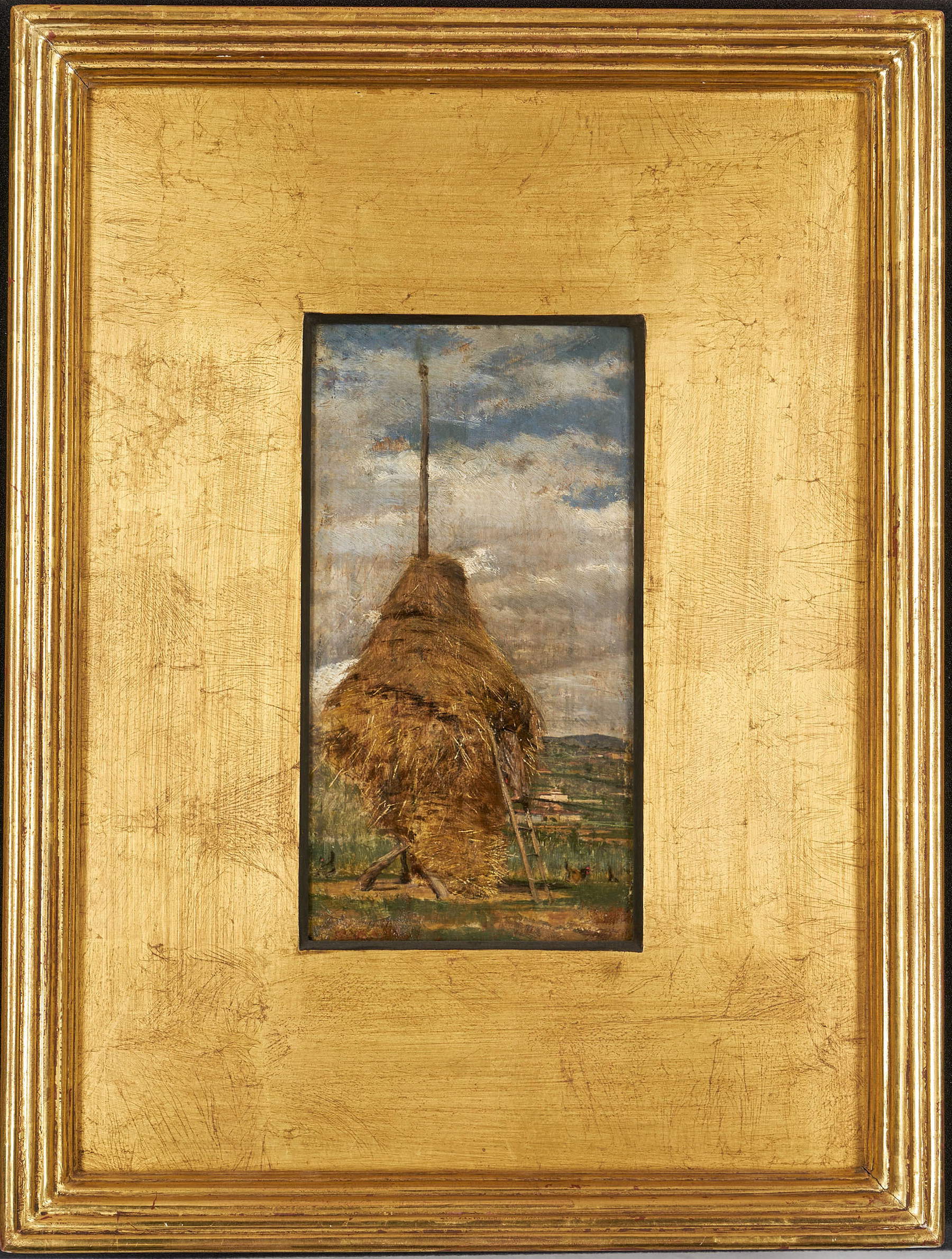The Museum of the Ancient Palace of Bishops in Pistoia, managed by the Pistoia Musei Foundation, expands its collections with the acquisition of The Haystack by Giovanni Boldini (Ferrara, 1842 - Paris, 1931), a small oil on panel painting depicting a haystack bathed in the summer light of the Tuscan countryside. The work will be presented to the public on Saturday, November 29, 2025 at 5:30 p.m. in the Auditorium of the Antico Palazzo dei Vescovi in Pistoia. The meeting will be attended by Dr. Francesca Dini, one of the leading experts on Giovanni Boldini and curator of the catalog raisonné of his works. The work, donated to the foundation thanks to the intervention of Fondazione Caript, is an important piece in the understanding of the famous tempera murals created by the Ferrara artist in the summer of 1868 at Villa Falconer, in the village of Collegigliato, a few kilometers from Pistoia. The tempera murals, acquired in 1974 by the Cassa di Risparmio di Pistoia e Pescia and now part of the Intesa Sanpaolo Collection, have been rearranged inside the Antico Palazzo dei Vescovi in an arrangement faithful to the original one, allowing visitors to retrace the decorative arrangement conceived by Boldini for the villa. The recently acquired tablet (measuring 19 x 10 centimeters), reproduces the same subject on the west wall of the villa’s dining room, offering a direct and documented link to the mural cycle commissioned by Isabella Robinson Falconer. It is aportable work that allows us to observe the method from life with which Boldini approached the decorative project.
The inclusion of Il Pagliaio strengthens the core of Boldini’s works already in the museum’s collections and underscores the link between art, collecting and the history of the area. The work provides an in-depth look at the artist’s youthful phase, prior to the notoriety he won in Belle Époque Paris, characterized by a keen eye for the everyday and constant experimentation with light and matter. The painting’s value goes beyond the iconographic aspect, as it comes from the private collection of Cristiano Banti, a leading figure in the Macchiaioli movement. It was to Banti that Boldini entrusted numerous panels executed in Tuscany between Florence, Castiglioncello and the Pistoia countryside, before moving to Paris in 1871. The work thus represents direct evidence of Boldini’s Tuscan phase, a period less well known than his Parisian fame but crucial to understanding the basis of his poetics and relationship with the Macchiaioli painters. Admission at the Auditorium of the Antico Palazzo dei Vescovi is free, with reservations required at pistoiamusei.it. The acquisition and presentation of the painting offer an opportunity to explore an often neglected chapter in the artist’s career, highlighting the relationship between youthful experimentation, local patronage and historical collecting.

 |
| Boldini's Haystack joins the collections of the Museum of the Ancient Palace of the Bishops of Pistoia |
Warning: the translation into English of the original Italian article was created using automatic tools. We undertake to review all articles, but we do not guarantee the total absence of inaccuracies in the translation due to the program. You can find the original by clicking on the ITA button. If you find any mistake,please contact us.